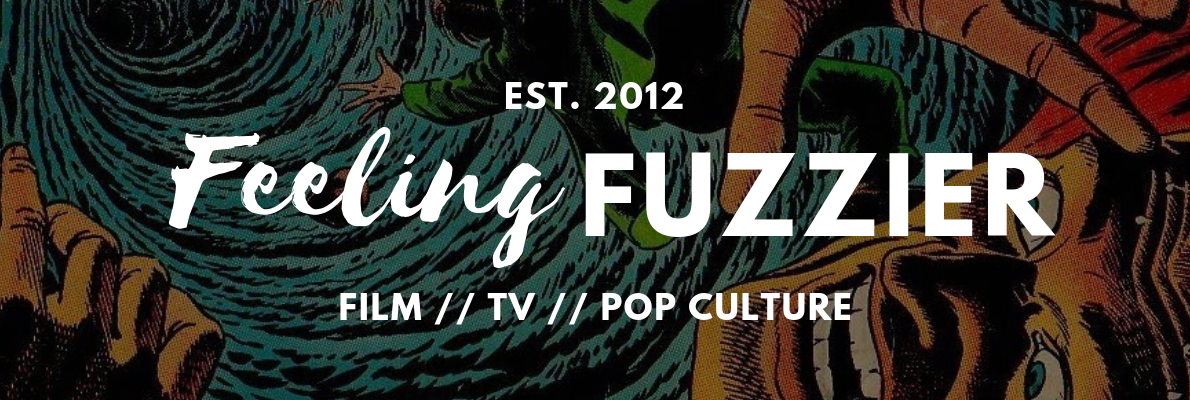.png)
A recap of my month in movies, media and streaming, featuring Netflix's Stranger Things, Interceptor, Spiderhead, and Paramount's new Star Trek series, Strange New Worlds.
Stranger Things season four part one (Netflix)
Bigger, scarier, more tentacles. Stranger Things season four has been gestating in the tank for a while – and the bigger budget and subsequent step up in scale is evident right from the get-go.The sprawling ensemble cast – which grows larger with every passing season – is now split across several states and storylines; Joyce, Jonathon, Will and Eleven have moved to California, Hopper is alive in a Soviet gulag, Dustin and Mike are members of a nerdy D&D club, Robin and Steve work at a VHS rental store, while Lucas is in the school basketball team and chasing after his ex-girlfriend Max.
As the plot unfolds, the characters crisscross and segment even further – to the point that the plot feels a little bloated or slow, like those early seasons of Game of Thrones that hopped back and forth. Some of these strands are great; everything back in Hawkins is stellar stuff, with serious scares, propulsive pacing and great interplay between the young cast. Sadie Sink's Max steals the spotlight in episode four, alongside Maya Hawke's Robin and Natalia Dyer's Nancy. New addition Joseph Quinn, as metalhead Eddie Munson, is fantastic too.
But other storylines are a real slog; everything with Hopper in Russia is really dull and drab, while Joyce teams up with conspiracy theorist Murray to rescue Hopper from his Kamchatka prison. I always found myself checking the clock, itching to get back to the good stuff.
It doesn't always work, but when it does, this season of Stranger Things is the show at its best – sentimental, spooky and schlocky at the same time, with sequences that homage everything from Nightmare on Elm Street to Silence of the Lambs.
Star Trek: Strange New Worlds season one (Paramount+)
Line of Duty seasons four, five and six (Netflix)
Jurassic World and Jurassic World: Fallen Kingdom (Binge)
Interceptor (Netflix)
Australian author Matthew Reilly makes the leap from page to screen with Interceptor, a tight 90-minute action flick starring Elsa Pataky as an American soldier who finds herself pitted against a team of turncoat terrorists whilst aboard a missile station in the middle of the Pacific Ocean.
Reilly has made a name for himself off the back of dozens of punchy, fast-paced novels that feature frenetic action and plenty of military terminology. So it tracks that his debut feature film – he serves as both director and co-writer – would be as an equally pulpy guilty pleasure.
The conceit is simple; Pataky is a one-woman army, stranded without backup and racing against a ticking clock. The terrorists have hijacked the rig and intent to fire a series of nuclear warheads at the United States – all that stands in their way is access to the rig's command centre, where Pataky holds the controls to 'interceptor' missiles that can shoot down the ICBMs.
So you've seen Die Hard and it's many imitators; Interceptor is the latest. It's basically Die Hard on a rig. It's safe to say that Pataky – best known for her ensemble role in the Fast and Furious films – isn't the best actress in the world, but she makes for a pretty good action hero. Muscular and steely, her character has an interesting backstory that gives Interceptor a shred of 'something to say', and Pataky is the perfect choice, someone who melds the look of a career solider with classic femininity.
Spiderhead (Netflix)
Since Top Gun: Maverick was delayed for its initial 2020 release date, Spiderhead marks the second Joseph Kosinski/Miles Teller film is as many months.A sci-fi thriller, Spiderhead sees Teller's character, Jeff, kept as a prisoner in a remote high-tech compound that tests pharmaceuticals on convicted criminals. The compound is owned and run by Abnesti (Chris Hemsworth), an enigmatic visionary who wears a smile on his face, but will seemingly stop at nothing to perfect his chemical concoctions.
Spiderhead is the kind of film that ten years ago might notch up a semi-successful stint in cinemas, owing to its household name cast and intriguing conceit. Nowadays, it's relegated to a quiet debut on Netflix – which is a shame, because while it's a bit patchy, it deserves a better fate than being added to the streaming scrapheap after a single weekend in the spotlight.
Hemsworth makes for an interesting villain; charming and dapper with a sinister edge underneath. Teller's character is quite sombre and sincere, which maybe doesn't play to his strengths as an actor. But there's a decent script tying all this together, even if the production feels a little hamstrung by the COVID world in which it was filmed (small cast, sterile interior environments, dialogue-driven story).







No comments:
Post a Comment